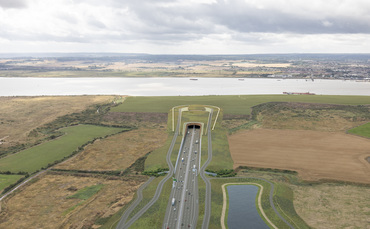But National Highways, which plans to submit an application for a Development Consent Order for the crossing later this year, stressed that it had managed to slash the predicted construction emissions of Lower Thames Crossing by a third thanks to careful route and structure design and plans to scale up the use of zero carbon energy, use low-carbon building materials, and reduce waste.
It said it was already looking at alternatives to carbon-intensive materials such as concrete and steel, as well as replacing diesel fuel at its sites with hydrogen and electric plants.
Roads minister Baroness Vere welcomed National Highways’ plans.
